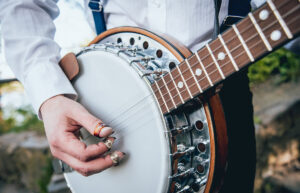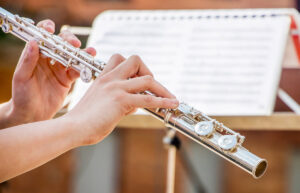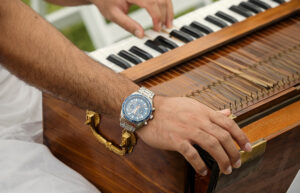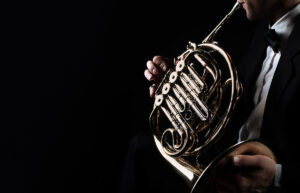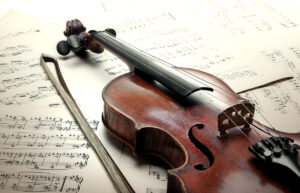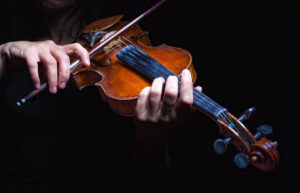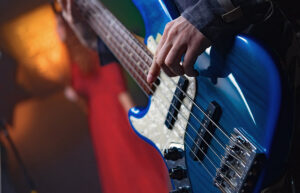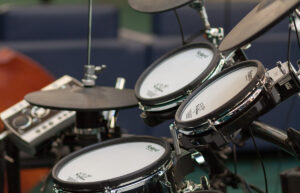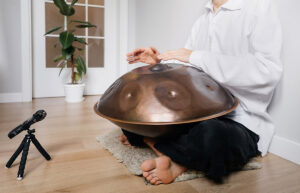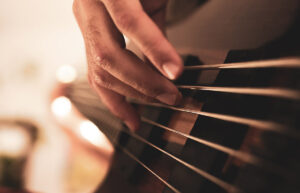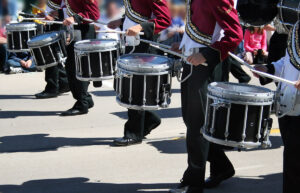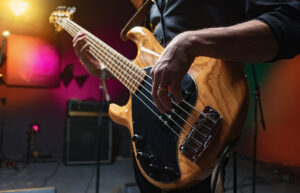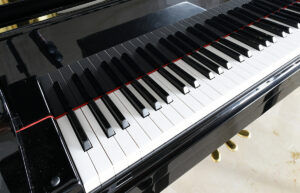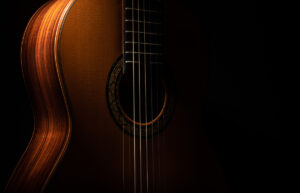How To Play Clarinet: Tips for Beginners

Imagine sitting down with your new instrument, feeling the smooth wood beneath your fingers and the cool metal of the keys. As you bring the mouthpiece to your lips, you embark on a voyage of discovery that will challenge your coordination, expand your musicality, and reward you with the ability to produce beautiful music.
If you’re interested in learning how to play the clarinet, our guide will take you through the essential steps. Whether you’re a beginner or a seasoned player, our tips will help you find your footing and start creating music with confidence.
So, take a deep breath, embrace the adventure, and let’s explore the delightful journey of playing the clarinet.
Welcome to TheDemoStop, now join the community!
Connect with artists, fans and producers around the world.
What is a Clarinet?
The clarinet is a single-reed woodwind instrument with a cylindrical bore and a flared bell. It produces sound when the player blows into it. The mouthpiece is commonly used in orchestral settings as well as in military and brass bands.
Known for its versatile and expressive playing style, the clarinet often takes a leading role in both solo performances and wind ensembles. It is a staple in various music genres, including classical, jazz, and marching bands.
The clarinet family includes several members: B♭ clarinet, A clarinet, A♭ clarinet, E♭ clarinet, D clarinet, C clarinet, basset clarinet, basset horn, E♭ contrabass clarinet, contrabass clarinet, subcontrabass clarinet, alto clarinet (E♭), and bass clarinet.
How To Play Clarinet
Choosing the Right Clarinet
- Determine your level: Beginners should start with a durable and more affordable plastic student model. Intermediate and advanced players usually opt for wooden clarinets, which produce a richer tone.
- Test different clarinets: If possible, try several clarinets to see which one feels most comfortable and produces the best sound for you. B♭ clarinet is best suited for beginners.
- Consider the brand: Some well-known brands, such as Yamaha, Buffet Crampon, and Selmer, are reliable choices.
Assembling the Clarinet
- Prepare the reed: To learn how to play clarinet, start by moistening the reed by placing it in your mouth or soaking it in water for a few minutes.
- Attach the mouthpiece: Start with the bottom, assemble and place the mouthpiece onto the barrel, aligning it properly.
- Attach the barrel to the upper joint: Gently twist the barrel onto the upper joint.
- Attach the upper joint to the lower joint: Carefully align the bridge key (a small metal piece connecting the two joints) to avoid bending it.
- Attach the bell: Twist the bell onto the lower joint.
- Secure the reed: Place the reed onto the mouthpiece, ensuring it is centered and flush with the tip, then secure it with the ligature (a metal or fabric clamp).
- Additional tip: Handle all the pieces carefully and avoid gripping, as too much pressure can bend or break the parts.
Know the Basic Notes on a Clarinet
- Familiarize with the clarinet’s range: The clarinet’s written range spans from E3 to C7.
- Learn the fingering chart: Start with the notes in the lower register (chalumeau register) and gradually learn notes in the middle (clarion) and upper registers (altissimo).
Practice basic scales: To get used to the fingerings and note transitions, begin with simple scales like C major, G major, and F major.
The basic/first notes on a clarinet are:
- G (without blocking any hole)
- F (with only your left thumb)
- E (adding the index finger)
- D (now the middle finger)
- C (with the ring finger)
- Additional tip: Learning beginner sheet music for clarinet can help you with your playing style.
Proper Posture and Hand Position
- Sit or stand straight: While practicing how to play clarinet, keep your back straight and shoulders relaxed to maintain a good posture.
- Hold the clarinet at a 45-degree angle: The clarinet should point downward slightly.
- Left hand on top: Place your left hand on the upper joint, with the thumb covering the thumb hole and the fingers resting on the tone holes.
- Right hand on bottom: Place your right hand on the lower joint, with the thumb under the thumb rest and the fingers on the tone holes.
Breath Control and Embouchure
- Form the embouchure: Shape your mouth as if saying “ee” while keeping your lips firm around the mouthpiece. Proper embouchure is crucial for good tone and intonation.
- Place the mouthpiece in your mouth: The reed should be against your bottom lip, with your top teeth lightly touching the mouthpiece.
- Breath support: Use your diaphragm to control the airflow, keeping your throat open and relaxed. This step is essential for sustaining notes and controlling dynamics (volume).
- Consistent air stream: Ensure a steady and even airflow to produce a clear and stable sound.
Welcome to TheDemoStop, now join the community!
Connect with artists, fans and producers around the world.
Articulation
Articulation on the clarinet involves coordinating the tongue, breath, and embouchure. It is a three-step process:
- Breathe
- Set (tongue on the reed and air blowing)
- Release
A few of the types of articulation used in the process of how to play clarinet are listed below:
- Tonguing: Use the tip of your tongue to lightly touch below the reed, stopping the airflow momentarily to articulate notes.
- Slap tonguing: Making a suction between the tongue and the reed can help you replicate a slapping sound effect.
- Lateral Tonguing: Move your tongue laterally (side-to-side) instead of back and forth to and away from the reed.
Check Your Mouth and Reed Positions
- Reed alignment: Ensure the reed is centered and flush with the tip of the mouthpiece.
- Mouthpiece placement: About half of the reed should be inside your mouth.
- Lip position: The bottom lip should cover your bottom teeth slightly, providing a cushion for the reed.
Practice Playing a Few Notes
- Start with long tones: Play long, sustained notes to develop breath control and tone consistency.
- Simple melodies: Practice easy melodies like “Mary Had a Little Lamb” to familiarize yourself with note transitions.
- Basic scales: Play major and minor scales slowly, focusing on smooth finger movements and even tone production.
- Daily practice: Lastly to become a professional at how to play clarinet, consistency is the key. Dedicate time each day to practice. You should gradually increase the complexity of the pieces and exercises you work on.
Conclusion
What is a clarinet?
The clarinet is a woodwind instrument with a single-reed mouthpiece and a cylindrical body with numerous tone holes and keys.
How to play clarinet?
- Choosing the right clarinet
- Know the basic notes on a clarinet
- Assembling the clarinet
- Proper posture and hand position
- Breath control and embouchure
- Articulation
- Check your mouth and reed positions
- Practice playing a few notes
FAQs
Is a clarinet easy to learn?
The clarinet is moderately easy to learn initially, but mastering it requires dedication and regular practice.
How to play the clarinet as a beginner?
- Choosing the right clarinet
- Know the basic notes on a clarinet
- Assembling the clarinet
- Proper posture and hand position
- Breath control and embouchure
- Articulation
- Check your mouth and reed positions
- Practice playing a few notes
What are the basic notes on a clarinet?
The basic/first notes on a clarinet will be:
- G (without blocking any hole)
- F (with only your left thumb)
- E (adding the index finger)
- D (now the middle finger)
- C (with the ring finger)
Can I learn the clarinet on my own?
Yes, you can learn the clarinet on your own with dedication and the right resources. Start with a good beginner’s method book, use online tutorials and videos, practice regularly, and consider occasional lessons with a teacher to ensure proper technique and progress.
How many years does it take to learn clarinet?
The time it takes to learn the clarinet varies depending on factors like practice frequency, quality of instruction, and individual aptitude. Generally:
- Basic proficiency: 1-2 years with regular practice.
- Intermediate level: 3-5 years, including playing more complex pieces and techniques.
- Advanced level: 5-10 years or more, reaching a professional or highly skilled amateur level.







